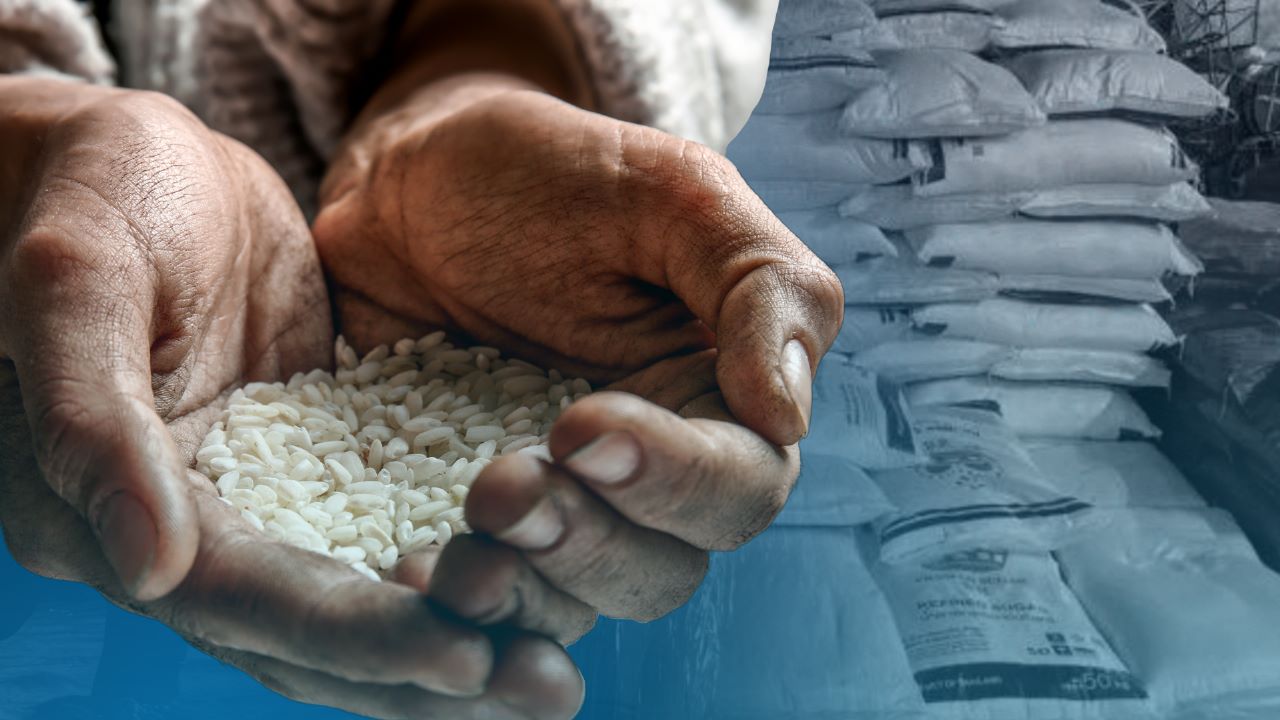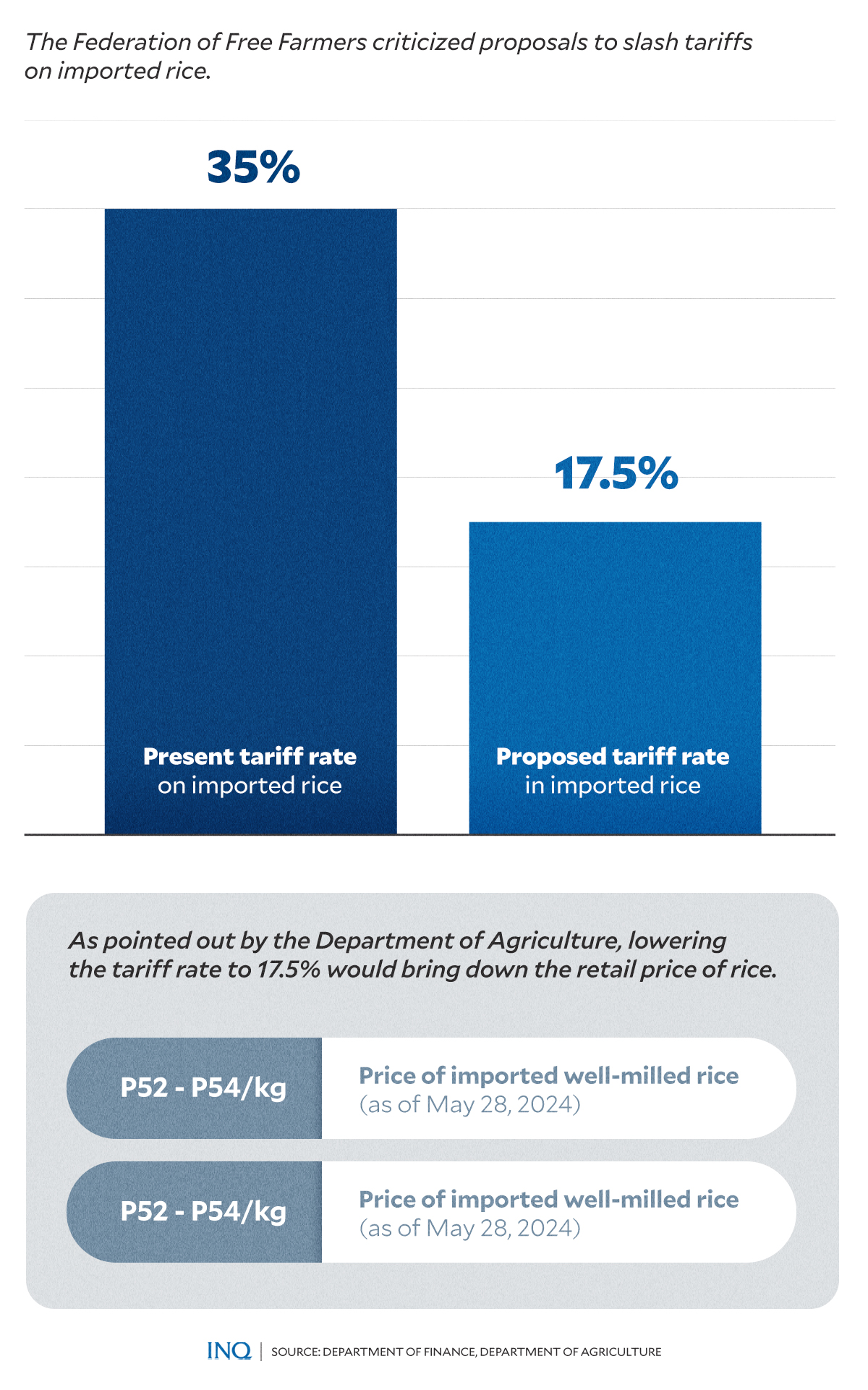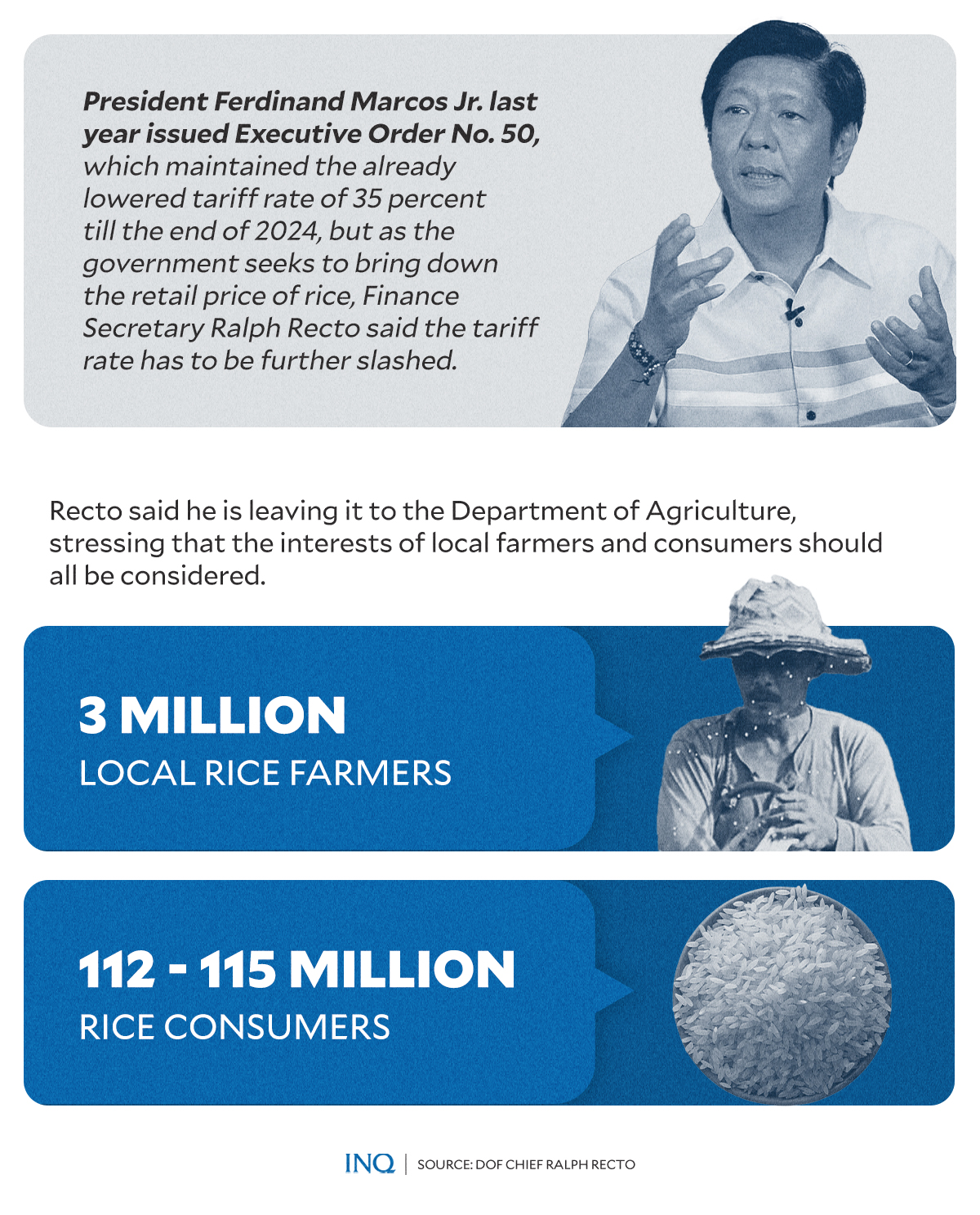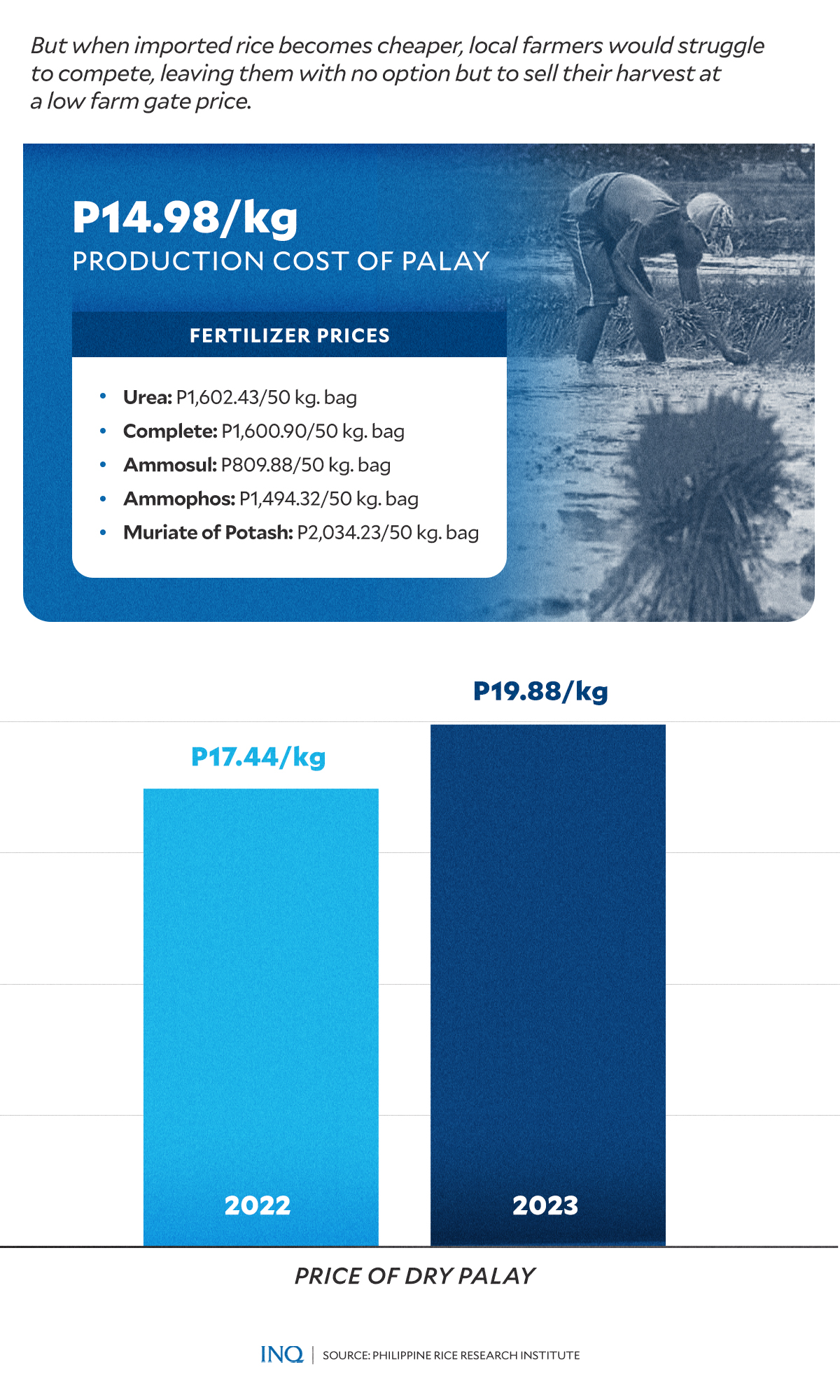MANILA, Philippines — “Haan nak agtalonen (I will stop tilling my land already).”
Lauro Manipon, a 63-year-old farmer in Pangasinan said this as he expressed exasperation over the government’s “neglect of farmers,” especially now that the Department of Finance (DoF) has proposed a slash in the tariff rate for imported rice.
“Sikami lattan iti kanayon a kakaasi (We are always disadvantaged),” he told INQUIRER.net, pointing out how tough life is for palay farmers. “Kanayon kami laengen nga mabaybay-an (We are always neglected).”
READ: When those who feed the nation are the poorest: Farmers, fisherfolk in deepest poverty pit
Last week, Finance Secretary Ralph Recto stated that to bring down the price of rice, the government has to reduce the tariff rate for imported rice from 35 percent to 17.5 percent, saying, however, that he would leave the decision to the Department of Agriculture (DA).
This, as he pointed out the need to strike a balance between 112 million consumers and three million palay farmers all over the Philippines. “[There should be] a good balance,” Recto said.
Easing inflation
Based on data from the DA, which was stated by Agriculture Assistant Secretary Arnel de Mesa, reducing the 35 percent tariff rate would bring down the retail price of rice by P4 to P5 a kilo.
Last April, inflation accelerated to 3.8 percent from 3.7 percent in March because of higher food and transportation costs, the Philippine Statistics Authority said.
READ: April inflation surprises at 3.8%
PSA data indicated that rice inflation eased to 23.9 percent in April from 24.4 percent in March. A kilo of imported well-milled rice is worth P52 to P54 as of May 28, 2024.
It was last year when President Ferdinand Marcos Jr. issued Executive Order No. 50, to keep the already lowered tariff rate of 35 percent till the end of 2024.
As pointed out by Recto, reducing the tariff rate on imported rice could bring down the retail price of the grain by September, when world prices of the commodity are expected to go down.
READ: More cuts to rice tariffs urged to tame inflation
The DoF stressed that the government is set to lose “less than P10 billion” in revenues should it decide to reduce the tariff rate on imported rice to 17.5 percent.
Imbalance
But while the DoF said that it was willing to let go of that amount to control inflation, its proposal did not sit well with palay farmers who are already struggling to make a living out of their yields.
READ: DOF: Rice tariff cut to cost Philippines ‘less than P10B’
As the Federation of Free Farmers (FFF) said, the proposed reduction in the tariff rate could further depress palay prices by P3 a kilo when cheaper rice is brought into the market, where domestic rice is likewise sold by millers and traders.
“This could result in a loss of P33 billion to rice farmers, who normally harvest 11 million tons of palay in the second half of the year,” the FFF said in a statement.
It pointed out, too, that assuming an additional two million tons of imported rice in the second semester, the DoF proposal would mean less revenues that are “legally earmarked for rice farmers’ productivity programs.”
READ: Double-edged sword: The costs of controlling rice prices
Together with the losses from lowered palay prices, the FFF said that farmers stand to lose a total of P43 billion from the proposed tariff reduction for 2024, or P14,333 for each of three million local farmers.
This, as when cheaper imported rice is brought into the market, local farmers struggle to compete, leaving them with no option but to sell their harvest at a low farm gate price.
Laying bet
Based on data from the Philippine Rice Research Institute (PhilRice), the production cost of palay in 2022 was P14.98 a kilo, while the farm gate price of dry palay was P17.44 a kilo. This rose to P19.88 a kilo in 2023.
The DA, however, said that even with a reduced tariff rate, farm gate prices would not be affected a lot because the National Food Authority’s buying cost is now P23 to P30 a kilo for dry palay.
For Raul Montemayor, FFF national manager, the government should instead look for alternative ways to bring down the retail price of rice without neglecting local farmers.
“Government can just buy rice locally or even import – if absolutely necessary – and distribute these to poor consumers through its KADIWA and other outlets,” he said.
The private sector can take care of supplying unsubsidized rice to consumers who can afford to buy them. Tariff cuts are not needed since import prices are expected to go down soon anyway, as stated by Secretary Recto himself,” said Montemayor.
RELATED STORY: Hybrid seeds: The risks farmers are not willing to take





